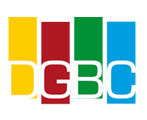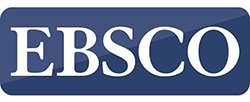Increasing the competitiveness of educational institutions in the conditions of internetization
DOI:
https://doi.org/10.46502/issn.1856-7576/2022.16.03.2Palabras clave:
education, digital technology, education management system, educational institutions, competitiveness of educational institutions, educational ratings, modeling of education system development processes.Resumen
Transformational social processes, the development of science and technology, changes in the value systems and orientations of the individual, the active introduction of digital technologies into all spheres of human life and economic systems, determine the need for the formation of new requirements for ensuring the quality of the educational process. At the same time, the development of technologies, foremost, the development of digital technologies determines great opportunities for the development of education, but the effective use of new technologies is possible only if the processes of management of educational systems are rationalized at the global level, the level of the state, and the level of a separate educational institution. Therefore, considering the relevance of the research, the article sets a goal: to develop mechanisms for increasing the efficiency of management of educational institutions through the introduction of digital technologies to ensure their competitiveness in the market for the provision of educational services in accordance with new social requirements and global transformations. The object of research in the article is the management system of educational institutions. Methodology. The study analyzed trends and trends in the development of the education system and educational institutions by using methods of statistical analysis and comparison. To structure educational institutions according to the level of use of digital technologies, the leading international rankings QS World University Rankings, Webometrics, Google Scholar Citations and UniRank were analyzed. Based on the analysis, a structured set of indicators and control maps of ratings of the digital popularity of educational institutions were formed. As a result, the article models the effectiveness of using digital technologies as elements of the management system. The projection of the planned results of the use of digital technologies allows modeling the processes of the development of the education system as an element of managing the competitiveness of educational facilities. The results. As a result of the analysis, it was determined that ensuring the competitiveness of educational institutions in the conditions of social transformations significantly depends on the level of use of digital technologies for the promotion of the educational institution, image formation, popularization of its own scientific research and activity results, as well as journalistic activity. The expediency of using database resources, as well as social network resources as an element of the educational institution’s digital promotion strategy to ensure its competitiveness, was determined, which was confirmed by analyzing the results of the leading world ratings. Among the main tasks of the management system, which solve the methods of using digital technologies, as well as the advantages that ensure the competitiveness of educational institutions, there are the following: mobile access to public information, a strategy of openness, positioning and creating a positive image, forming the image of an individual scientist and an educational institution by positioning journalistic activity, ensuring accessibility to information, increasing competitiveness by complying with modern trends in the development of an innovative information society.
Citas
Adonis, A., and Drira, K. (2007). Model‐based design methods for adaptive e‐learning environments. Interactive Technology and Smart Education, 4(2), pp. 100-116. https://doi.org/10.1108/17415650780000307.
Ahad, T., Busch, P., Blount, Y., & Picoto, W. (2021, January) Mobile Phone-based Information Systems for Empowerment: Opportunities for Ready-made Garment Industries. Journal of Global Information Technology Management, 24(1), pp. 57-85. https://doi.org/10.1080/1097198X.2020.1866896
Aranguren, M. J., and Magro, E. (2020). How can universities contribute to regional competitiveness policy-making? Competitiveness Review, 30(2), pp. 101‒117. https://doi.org/10.1108/CR-11-2018-0071.
Ari, F., & Arslan-Ari, I. (2022, October) Examining nontraditional graduate students’ experiences with video feedback in a fully online course. The Internet and Higher Education, Volume 55. https://doi.org/10.1016/j.iheduc.2022.100858
Bautista-Puig, N., Orduña-Malea, E., and Perez-Esparrells, C. (2022). Enhancing sustainable development goals or promoting universities? An analysis of the times higher education impact rankings. International Journal of Sustainability in Higher Education, 23(8), pp. 211‒231. https://doi.org/10.1108/IJSHE-07-2021-0309.
Cabero-Almenara, J., Fernández-Batanero, J.M., & Barroso-Osuna, J. (2019, May) Adoption of augmented reality technology by university students. Heliyon, 5(5), https://doi.org/10.1016/j.heliyon.2019.e01597
California Institute of Technology (Caltech) (n/d). Electronic resource. URL: https://www.caltech.edu/
Doğan, G., and Al, U. (2019). Is it possible to rank universities using fewer indicators? A study on five international university rankings. Aslib Journal of Information Management, 71(1), pp. 18‒37. https://doi.org/10.1108/AJIM-05-2018-0118
Fong, R. W. T., Lee, J. C. K., Chang, C. Y., Zhang, Z., Ngai, A. C. Y., & Lim, C. P. (2014, January) Digital teaching portfolio in higher education: Examining colleagues’ perceptions to inform implementation strategies, Volume 20, pp. 60‒68. The Internet and Higher Education. https://doi.org/10.1016/j.iheduc.2013.06.003
Gupta, P., Kulkarni, T., & Toksha, B. (2021) Challenges and Futuristic Approach of Blended Learning in Higher Education. Chapter 8. Innovative Education Technologies for 21st Century Teaching and Learning. CRC Press, pp. 19. https://doi.org/10.1201/9781003143796
Harvard University. (n/d). Electronic resource. URL: https://www.harvard.edu/
Imperial College London. (n/d). Electronic resource. URL: https://www.imperial.ac.uk/
International rating UniRank. (n/d). Electronic resource. URL: https://www.webometrics.info/en/transparent
International rating Webometrics. (n/d). Electronic resource. URL: https://www.webometrics.info/en/world?sort=asc&order=ranking
International rating Google Scholar Citations (n/d). Electronic resource. URL: https://www.webometrics.info/en/transparent
International rating QS. (n/d). Electronic resource. URL: https://www.topuniversities.com/university-rankings/world-university-rankings/2022
Jabnoun, N. (2009). Economic and cultural factors affecting university excellence. Quality Assurance in Education, Vol. 17. No. 4, pp. 416‒429. https://doi.org/10.1108/09684880911005407
Khan, W., Nisar, Q.A., Sohail, S., & Shehzadi, S. (2021) The Role of Digital Innovation in E-Learning System for Higher Education during COVID 19. Chapter 6. Innovative Education Technologies for 21st Century Teaching and Learning. Prensa CRC, pp. 26. https://doi.org/10.1201/9781003143796
Markpin, T., Premkamolnetr, N., Ittiritmeechai, S., Wongkaew, C., Yochai, W., Ratchatahirun, P., Lamchaturapatr, J., Sombatsompop, K., Kanok‐Nukulchai, W., Inn Beng, L., and Sombatsompop, N. (2013). The effects of choice of database and data retrieval methods on research performance evaluations of Asian universities. Online Information Review, 37(4), pp. 538‒563. https://doi.org/10.1108/OIR-04-2012-0050
Massachusetts Institute of Technology. (n/d). Electronic resource. URL: https://www.mit.edu/
McCoy, C. G., Nelson, M. L. and Weigle, M. C. (2018). Mining the Web to approximate university rankings. Information Discovery and Delivery, 46(3), pp. 173‒183. https://doi.org/10.1108/IDD-05-2018-0014
Oymana, M., Bala, D., & Ozerb, S. (2022, March) Extending the technology acceptance model to explain how perceived augmented reality affects consumers’ perceptions. Computers in Human Behavior, Volume 128. https://doi.org/10.1016/j.chb.2021.107127
Pacheco, E., Lips, M., & Yoong, P. (2018, April) Transition 2.0: Digital technologies, higher education, and vision impairment The Internet and Higher Education, Volume 37, pp. 1‒10. https://doi.org/10.1016/j.iheduc.2017.11.001
Pinkovetskaia, I. (2019). Evaluación de la concentración del emprendimiento en las regiones de Rusia. Revista Científica Del Amazonas, 2(4), 18-26. Recuperado a partir de https://revistadelamazonas.info/index.php/amazonas/article/view/19
Stanford University. (n/d). Electronic resource. URL: https://www.stanford.edu/
Tutterow, C., and Evans, J. A. (2016). Reconciling the Small Effect of Rankings on University Performance with the Transformational Cost of Conformity. The University Under Pressure (Research in the Sociology of Organizations, Vol. 46), Emerald Group Publishing Limited, Bingley, pp. 265‒301. https://doi.org/10.1108/S0733-558X20160000046009
UCL. (n/d). Electronic resource. URL: https://www.ucla.edu/.
University of Cambridge. (n/d). Electronic resource. URL: https://www.cam.ac.uk/
University of Michigan. (n/d). Electronic resource. URL: https://umich.edu/
University of Oxford. (n/d). Electronic resource. URL: https://www.ox.ac.uk/
Waheeduzzaman, A. N. M. (2007). States, demographics and competitiveness of America’s best universities. Competitiveness Review, 17(1/2), pp. 77‒93. https://doi.org/10.1108/10595420710816632
Yale University. (n/d). Electronic resource. URL: https://www.yale.edu/
Descargas
Publicado
Cómo citar
Número
Sección
Licencia
Derechos de autor 2022 Yuliya Zhuravel, Yuliia Kuzmenko, Olesia Fedoruk, Iryna Tymkiv

Esta obra está bajo una licencia internacional Creative Commons Atribución 4.0.















